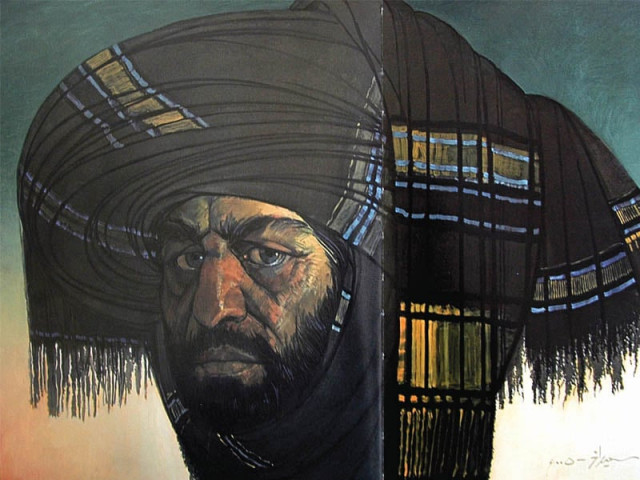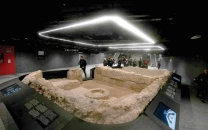Saeed Akhtar: When art and passion collide
Artist Saeed Akhtar talks about his intriguing subjects and his love for self-portraits.

Saeed Akhtar is to Pakistan what Michelangelo was to the Sistine Chapel — a master craftsmen and an innovator. Akhtar imagines beautiful women and horses, gives them shape and texture and brings them to life on his canvas. His humble studio, the intimate space that the artist has made his own, has just as much character as the artist himself.
Arts and smarts
“Ask me something that people have never asked me before,” is the first thing he says. “I think it is boring to read about where I come from and how I started to paint.” To elude the formality, Akhtar talks about his wife, his love affair with himself and the beauty that is around us on a regular basis.
“Every human being is beautiful but what attracts me the most is the hair,” says Akhtar. “Hair is the most beautiful feature because the fluidity that it has no other feature of the human body can ever have.” As the conversation rolls, the importance of sculptures comes up. “Most schools don’t teach sculpting anymore and unless you do not know how to make a sculpture you can’t learn how to paint portraits,” says the artist.
It is very important for the artist to feel the dynamics of the face on clay and then translate them on the canvas. “Paintings are all about creating an illusion but the sculpture is a reality. It is so real and tangible that people from different sects and religion have given it God-like reverence,” Akhtar adds.
Investigating anatomy
The importance of knowing anatomy is also crucial. Akhtar reminisces the days he had gone for pilgrimage and was exposed to the different races in the world. “I was fascinated that how we are so different and was amused to see how Africans and Asians have starkly different features,” he says. “As I delved into the matter, I found out that the nose bone in Caucasians is a little higher than the bone in Africans and Far East Asians.” His observation solidified his belief that without knowing the anatomy properly, an artist can never paint accurately.
However, while talking about his work Akhtar reveals, “The painting I am most proud of is a circular canvas and all I wanted to do was make two eyes in the centre of it. I tried for three years to make something out of it but it wouldn’t work. Then one day, I started drawing lines and all of a sudden it turned out to be a man’s face concealed in a turban with only his eyes showing.”
Ardour for his own reflection
It is true that artists are very sensitive and fall in love easily. “We fall in love with beauty and our intentions are different,” continues Akhtar. “I have fallen in love with my own portrait.” There is a fine line between narcissism and benign admiration. As Akhtar fiercely flips through books to show his self-portraits, one realises that there is nothing narcissistic about him. He is simply a man who is secure with himself and his environment.
It is popularly known that Akhtar is colour-blind and can’t see the colours red and green. It is remarkable for someone to not be able to see the two colours and yet create such beautiful blends and hues of the shade. “I may not be able to see the colours but I have learnt the theory of how they are made so whenever I want to use them. It’s very intuitive.”
Gone, but not forgotten
As he continues to talk about love, the love for his wife comes up. “She was the most amazing thing to ever happen to me.” The artist gives his spouse, who passed away in 2011, a lot of credit for his success, “She allowed me to paint and for a woman to be so secure to let her husband paint beautiful women without inhibition is a characteristic no one has.”
Forever creative
As the conversation progresses, Akhtar remains cooped up his studio layering canvas after canvas with his creativity. “I love sketching. Even when I’m sitting all alone I start sketching just to see what all can I make.” While most artists would hesitate in showing their creative process, Akhtar believes that no one can steal or copy his art work and art is like happiness, the more you share the more it will grow. “The original will always be original and although it hurts to see people copy other people’s work, I know there are people who understand the value of true art.
Published in The Express Tribune, May 28th, 2012.



















COMMENTS
Comments are moderated and generally will be posted if they are on-topic and not abusive.
For more information, please see our Comments FAQ